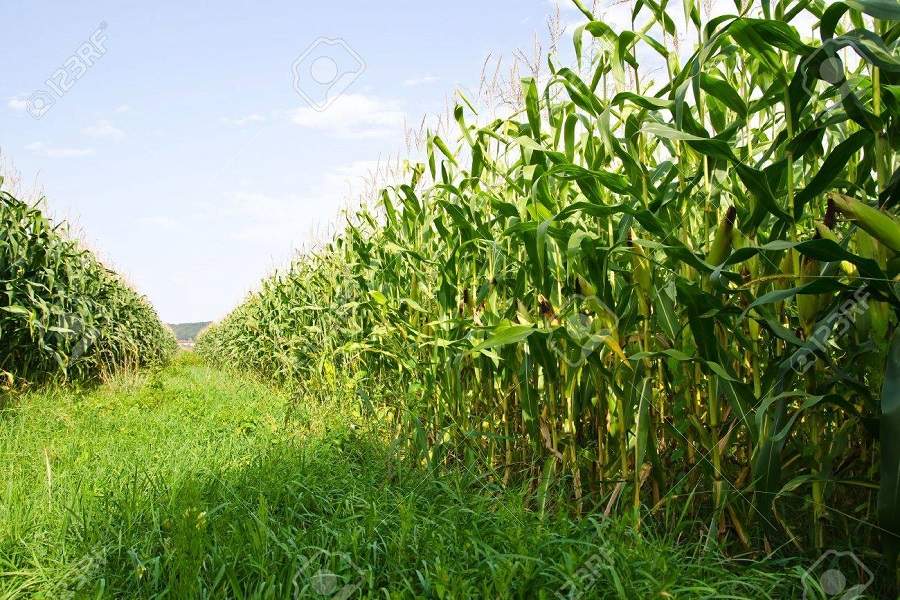Nigeria is amazingly blessed with both human and natural resources making other countries grin with envy. Nigeria is richly endowed with 91 million hectares of arable land and quantum of water resources, soil fertility, favourable topography and climates. Land and water resources are certainly important natural resources available for exploitation to develop the agricultural sector. The country has mean annual rainfall of 1,390 mm resulting to 305 billion cubic metres of water annually.
Thus, Nigeria has seven distinct climate zones, which provide average annual rainfall ranging from 700 mm in the far north (Sahel Savannah) to 4,000 mm in riverine and mountainous areas in the South. Again, the third biggest river with a length of 4,180 km in Africa, River Niger passes through the country and drains an average discharge of 5,589 m3/s into the Atlantic Ocean. The river has six major perennial rivers as tributaries criss-crossing the length and breadth of Nigeria making it the most endowed country with unlimited water resources. Yet, the country cannot produce enough food to feed her teeming population. Thus, the nation has to massively import processed food items to augment the local production to feed the citizenry.
So, what is the way forward? This was the question posed in the first part of this article. The way forward is to mechanise the agriculture. Mechanising agriculture involves the design, fabrication and distribution of devices, tools and techniques capable of reducing raw labour, increasing productivity and enhancing efficiency of crop production/protection, harvesting, preservation and processing. Thus, the answer is to develop, promote and adopt improved indigenous technologies that are suitable to our farming system. The technologies have to be efficient for peasant farming and affordable to the generality of farmers. What are these technologies and where are they?
There are many technologies developed by Nigerians from local fabricators to engineers or scientists in several towns across the country. Samples of the locally developed technologies are hand-held rice reaper, small-scale rice milling machine, multi-crops thresher, small scale combined rice de-stoning, rice de-husking, polishing and milling machine, groundnut harvester, planting/transplanting machines, and many others.
Candidly, in the last two decades, several agricultural machines were developed locally to mechanise various stages of crops and livestock productions in Nigeria. In fact, development of agricultural machinery from design concept to fabrication and testing is not a rocket science that basically engineering graduate should be able to execute.
Technically, agricultural machines are designed to do the kind of operation/practice people do as farm operation with higher speed, efficiency and effectiveness. Fundamentally, farm or off-farm machinery is made up of two major components; prime mover with source of energy (electrical/mechanical) and machinery part for grinding, beating, crushing, slashing, milling, etc depending on the type of desired operations.
This is why Nigerians with their ingenuity, were able to develop some agricultural machines indigenously. The major drivers of indigenous agricultural machines are the research institutes, universities and polytechnics and followed by a few local fabricators who sometimes conceive the idea or cannibalise an imported machine to “steal the technology”. Whatever the case, there have been success stories.
The Institute for Agricultural Research (IAR), ABU Zaria and the National Centre for Agricultural Mechanisation (NCAM) are prominent research centres championing the development of indigenous agricultural machines. They have produced simple, local and cost-effective agricultural implements that would reduce drudgery attached with agriculture.
For example, NCAM has developed processing equipment for cassava to remove drudgery right from the planting to the final stage of processing including cassava peeling machines in different categories of sizes and capacities. Similarly, the center has also developed complete processing machines for cassava, for rice, cashew, and for yam processing, and had made a machine that could make yam heaps. Nigeria happens to be the largest producer of yam in the world, and there is no machine in the world that can make yam heaps.
IAR, one of the 17 national agricultural research institutes under Federal Ministry of Agriculture and Rural Development and an agricultural research centre of Ahmadu Bello University Zaria. IAR has a mandate of designing and fabrication of simple agricultural implements and equipment in addition to genetic improvements of 11 selected crops. Over the years, IAR has transformed its complex and low capacity Multi-Crop Thresher to simple, robust, efficient and high capacity machine.
The new prototype machine specifically designed to thresh sorghum, millet and soybean can also shell maize making it more versatile and cost effective for farmers and hire service operators. The machine performance in terms of output capacity, threshing and cleaning efficiencies are 410 kg/h, 99.6 per cent and 98.4 per cent for sorghum; 472 kg/h, 99.3 per cent and 94.9 per cent for millet; and 200 kg/h, 100 per cent and 89 per cent for soybean, respectively. This machine is unique when compared with other available machines that can only thresh effectively one or maximum of two crops with lots of grain damage and waste.
The losses due to visible grain damage and scatter loss for this machine are three per cent and 4.2 per cent for sorghum; 0.01 per cent and 10.5 per cent for millet; and 0.01 per cent and 4.2 per cent for soybean, respectively. Development is still ongoing to improve the machine performance and also include other crops such as wheat and rice.
Virtually, in all agricultural engineering departments of polytechnics and universities across the country, there are several prototype agricultural machines designed and fabricated by students and their supervisors as part of their degrees or diplomas programmes. The local fabricators and local companies are not left behind. Why are these efforts not paying off? Nigeria continues to import agricultural machines into the country. Small-scale farmers continue to use hoe and cutlass to perform their farm operations. What are the missing links? To be continued next week.
leadership.ng

